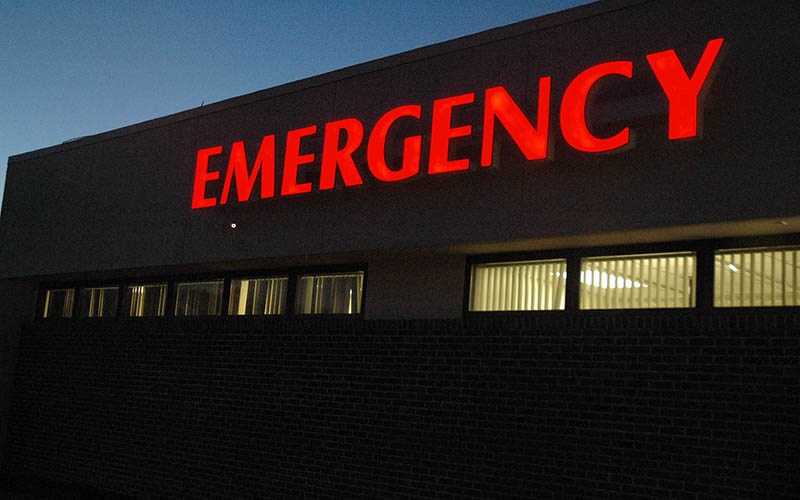WASHINGTON – Arizona hospitals are facing “dire financial consequences” and furloughing staff, as cutbacks meant to prepare for COVID-19 cases have instead cost them as much as $575 million a month, about 30-40% of normal revenues statewide.
The cancellation of elective procedures meant to free up beds for potential coronavirus patients, combined with a drop in emergency room visits, has deprived hospitals of the “cash cows” they need to stay afloat in an industry that otherwise has margins of only 3-4%, advocates said.
The result is health care centers in financial distress, at risk of closing or reducing staff, said Dr. Daniel Derksen, director of the Arizona Center for Rural Health at the University of Arizona.
“If you don’t have the revenues to support paying your nurses and physicians and staff and transport, lab, imaging, X-rays, those types of things, it creates just an untenable situation,” Derksen said.
Advocate said Congress included $30 billion for hospitals when it passed the $2 trillion Coronavirus, Aid, Relief and Economic Security, or CARES Act, last month. Arizona hospitals have already seen $220 million in assistance from the bill.
Arizona Hospital and Healthcare Association President Ann-Marie Alameddin said the money helps – some – but she called it “insufficient” at a time when state hospitals are seeing losses twice that amount every month.
Gov. Doug Ducey last month issued two executive orders directing hospitals to simultaneously increase capacity while cutting non-essential surgeries like knee replacements and minor cancers. Hospitals complied, but it was not without cost, said Arizona Public Health Association Executive Director Will Humble.
“Revenue is down and expenses are up,” Humble said. “If you don’t have the cash reserves to carry yourself through, you’re in big trouble fast even meeting payrolls.”
Derksen said rural hospitals serving smaller areas are facing a particularly tough challenge.
“Some of these hospitals in these smaller areas … the number of days they could stay open if their revenue completely stops can be as little as 30 days,” Derksen said.
Alameddin said hospitals across the state often operate in a precarious situation and are susceptible to drops in cash flow.
“Financially, hospitals typically have fairly small margins, maybe 3-4% so they simply do not have the margins to absorb those losses,” she said.
Advocates said one way hospitals might recover is by loosening restrictions on elective surgeries, within reason. Humble posed a hypothetical change under which hospitals would allow elective surgeries until a specified capacity percentage is reached that still leaves room for COVID-19 patients.
“That would be a policy change that wouldn’t cost the state any money but would allow the hospitals to bring in more revenue and at the same time allow patients to get some procedures that they’ve been waiting for,” Humble said.
Alameddin said the goals of Ducey’s executive orders are laudable but that, based on new recommendations from the federal Centers for Medicare and Medicaid Services, it may be time to reassess the restrictions on hospital services.
“I think it was the right call at the time but now we have better data,” she said. “It would be appropriate to allow those hospitals to be making that determination according to CMS guidance.”
Another possible source of help would be more federal funding. House and Senate leaders are currently negotiating on a proposal to add $250 billion to a small-business relief fund, but some Democrats are pushing for other industries to be added.
“I think many are hoping that this CARES II Act that they’re working on in Congress now would specifically address the acute needs in our rural and urban and underserved sites that are really on the brink of fiscal extinction right now because of this loss in revenue,” said Derksen.
He agreed with Alameddin that the $30 billion in hospital aid in the first CARES Act is “certainly not enough.”
In the meantime, Alameddin said that while precautions need to be taken for hospitals to be prepared for COVID-19 cases, the survival of hospital networks as the pandemic continues is of utmost importance.
“We’re going to be dealing with this potentially a year to 18 months out and the hospital infrastructure needs to be strong to meet that challenge,” she said. “We need finances to do that.”



